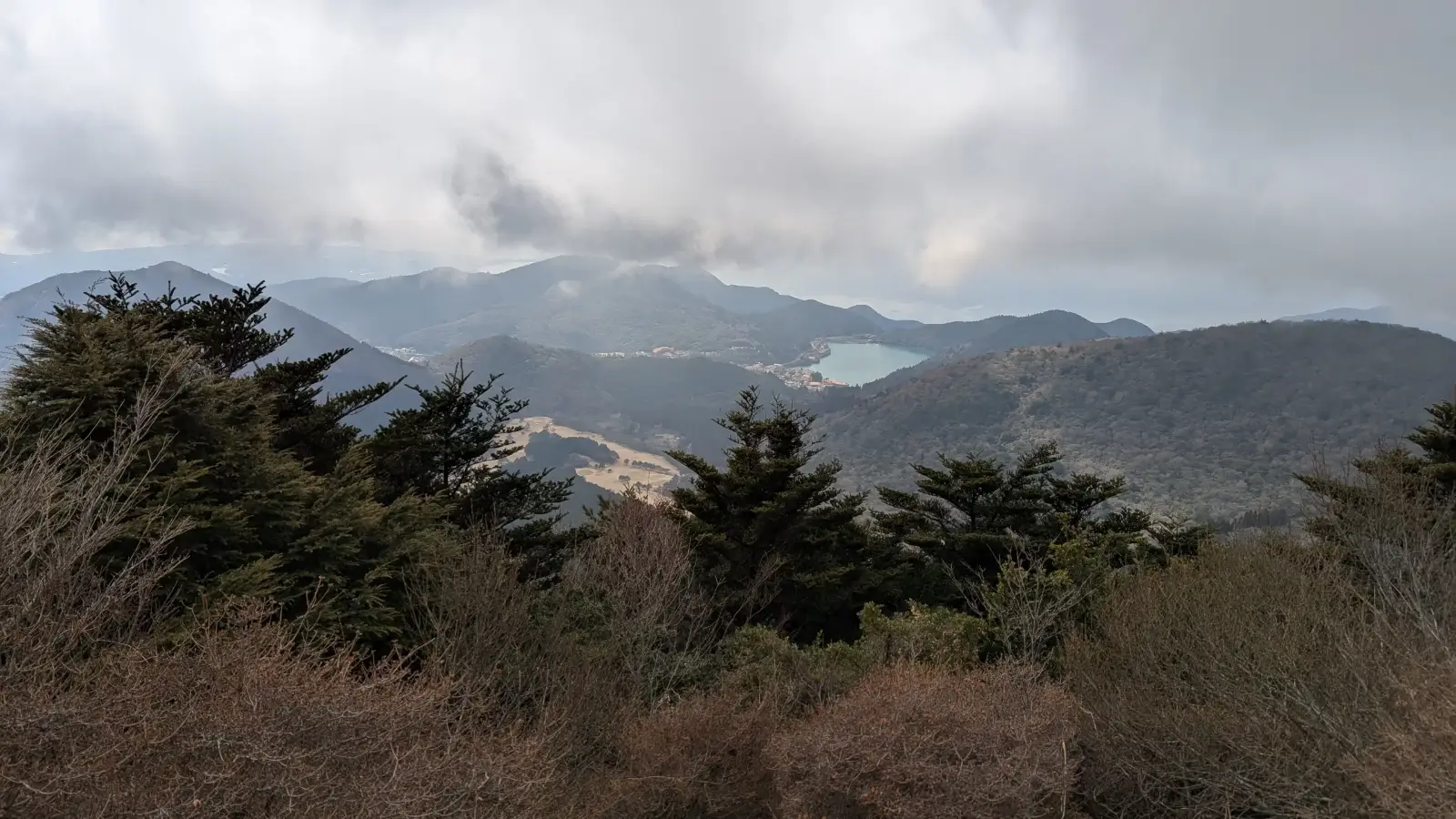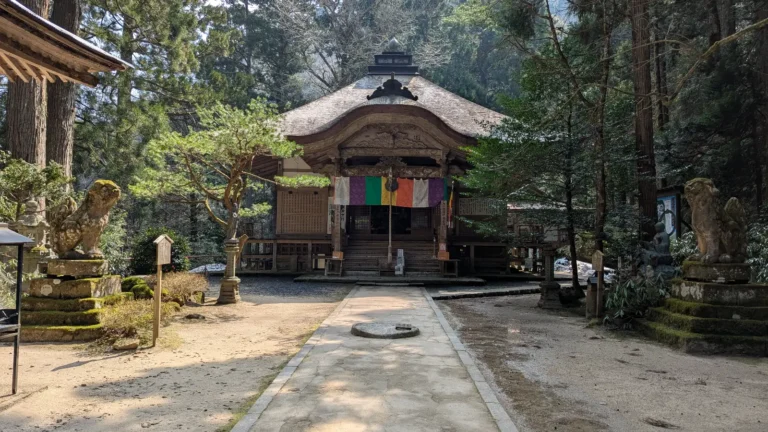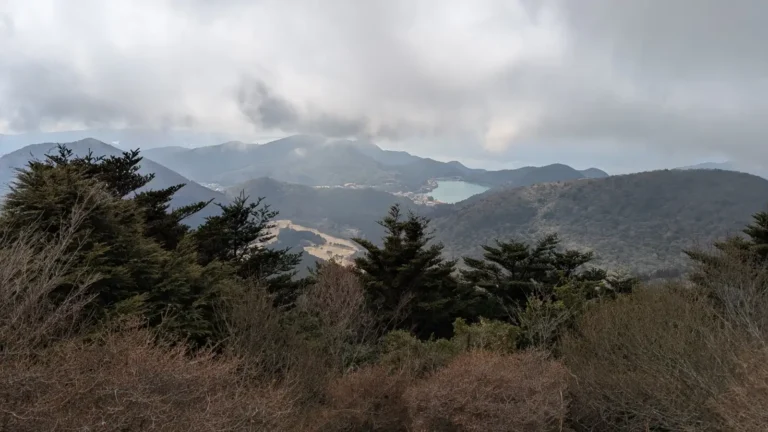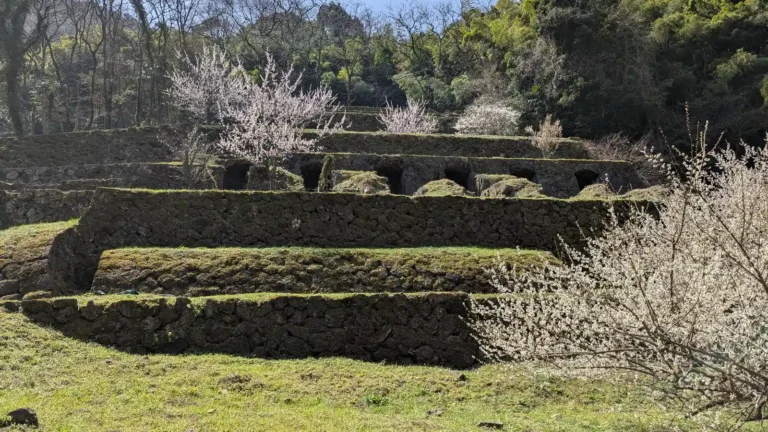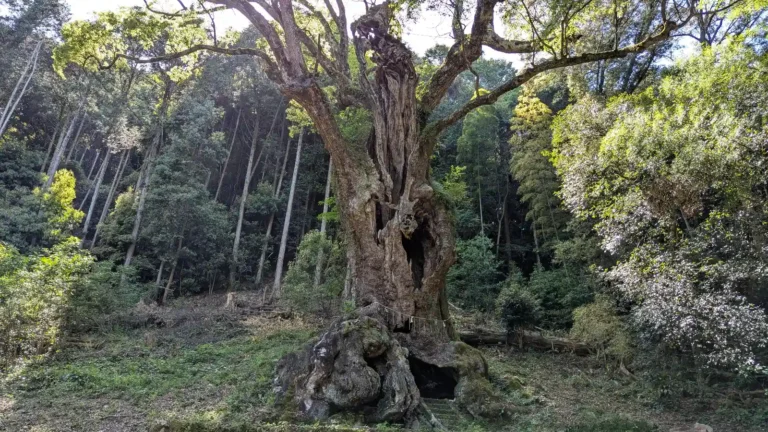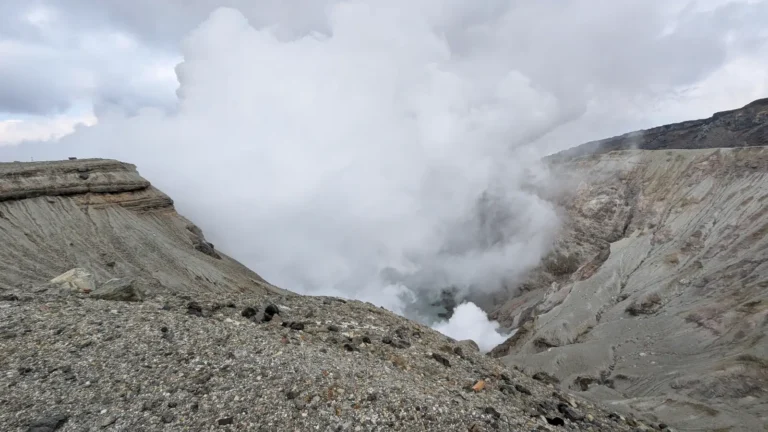Unzen-Amakusa National Park: A JOTM Guide
Mist rises from the earth like memory in motion. The wind carries sulfur and salt in equal measure, and gulls cry overhead, not far from steam that hisses between jagged rock. You don’t arrive here. You are absorbed, by the mountain, the water, the shifting edge of Kyushu’s land and soul. This is Unzen-Amakusa National Park (雲仙天草国立公園), a place where every ridge and ripple carries echoes of resilience. For those tracing the path of silence left by Amakusa’s hidden Christian sites in Japan, or wondering how to visit Unzen-Amakusa National Park in its full depth, the journey is less about direction, and more about attention. Not a single landscape, but a living dialogue between volcano and bay, faith and fire. Step slowly. The ground remembers everything.
Select links in this guide are affiliate links. They help sustain this space… allowing us to share more, with less dependence on advertising.
*Prices are subject to change.
Unzen-Amakusa National Park at a Glance
- Region: Nagasaki, Kumamoto, and Kagoshima Prefectures
- Nearest City: Shimabara (Nagasaki) and Amakusa (Kumamoto)
- Type of Site: National Park, Volcanic Terrain, Coastal Islands, Historic Christian Sites
- Best Season to Visit:
- Spring (March–May): Gentle mist and blooming azaleas frame the steaming valleys
- Summer (June–August): Lush green trails and ferry rides across sunlit waters
- Autumn (September–November): Crimson leaves blaze across mountain slopes and coastal paths
- Winter (December–February): Quiet snow on steaming earth, a contrast of stillness and heat
Why It’s Special in One Sentence:
Unzen-Amakusa is a place where earth, sea, and spirit meet, where steam rises from sacred ground and islands carry the weight of hidden prayers.
Why Unzen-Amakusa Is Worth Discovering: Highlights of Its Volcanic Stillness and Island Faith
- Established as one of Japan’s first national parks in 1934, Unzen-Amakusa holds both geological intensity and spiritual resonance across Kyushu’s shifting coastlines.
- Its name bridges two distinct realms: Unzen, a volcanic highland known for steam vents and sacred onsen, and Amakusa, an island archipelago shaped by hidden Christian history.
- Unzen’s peaks, including Mount Fugen, are the product of centuries of eruptions, yet today they offer rare stillness and panoramic solitude above the Ariake Sea.
- The region holds memory in its soil, from the Shimabara Rebellion to the quiet endurance of Kakure Kirishitan (Hidden Christians) whose faith survived in silence.
- Hot spring bathing here is not merely ritual, but a direct encounter with the earth’s living breath, especially in Unzen Onsen, where steam rises like prayer.
- Though spread across mountains, islands, and bays, Unzen-Amakusa remains unified by its atmosphere, one of resilience, reflection, and reverence for forces both human and natural.
For those drawn to places where silence carries spiritual weight, Sanbutsu-ji’s cliffside temple offers a different kind of pilgrimage, precarious, sacred, and unforgettable.
Must-See Wonders at Unzen-Amakusa National Park: Unzen Jigoku, Nita Pass, & Highlights
Unzen Jigoku
- A steaming geothermal field of hissing vents, sulfur pools, and white vapors
- Site of Christian martyrdom during the 1600s, where steam once hid suffering
- Walking trails loop through otherworldly terrain, with informative signposts
- Most atmospheric early morning, when mist and silence deepen the mood
For a deeper walk through Unzen’s shifting air and sound, our full journey into Unzen lingers in the moments steam becomes memory.
Nita Pass
- Reached via the Unzen Ropeway, with sweeping views across the Ariake Sea
- Especially striking in autumn, when the ridgeline blazes with maple and beech
- Offers access to hiking trails leading to Mount Myoken and Mount Fugen
- Clouds often drift below your feet, moments of stillness above the world
If you’re looking to lace up and linger longer on foot, our hiking trails to Unzen Onsen charts paths through fog, forest, and fire.
Amakusa Christian Museum
- Tells the story of Japan’s “Hidden Christians” and the legacy of underground worship
- Exhibits include hand-carved crosses, devotional art, and personal testimonies
- Set on a quiet hillside with views over the Amakusa archipelago
- A contemplative space that adds emotional depth to the region’s history
Himedo Coast
- Rugged coastline carved by waves, with dramatic cliffs and basalt formations
- Sea caves and wind-swept bluffs create a raw, meditative atmosphere
- Often empty, even in peak seasons, a space for reflection more than sightseeing
- Look for fishermen casting lines at sunset, backlit by gold and mist
Hot Springs of Obama Onsen
- A coastal hot spring town known for long outdoor footbaths beside the bay
- Waters emerge at Japan’s hottest natural temperature: 105°C
- At dusk, steam rises while fishing boats float just offshore, a striking contrast
- Try the local “onsen eggs,” slow-cooked in geothermal heat near the sea wall
Local Secrets from JOTM: Hidden Tips for Visiting Unzen-Amakusa National Park
- Go Early to Unzen Jigoku: Arrive just after dawn, when the rising steam meets the cool air and crows caw in slow motion, it feels less like a site and more like a ritual.
- Walk the Ridge Alone: Skip the peak crowds and follow the gentler trails near Nita Pass. Even in season, you can find a spot where only the wind knows your name.
- Stay on the Islands Longer Than You Think: Amakusa isn’t a quick stop, it’s a slow unfolding. Give it two days, minimum. The hush of the evenings is where its voice becomes clearest.
- Let the Onsen Be the Experience: Choose a ryokan where the bath faces mist or bay. Don’t rush. Don’t multitask. Just soak and let time dissolve.
- Visit in Late February: Snow may still linger, but the first spring scents begin to rise, and you’ll walk trails nearly alone, between seasons.
Nearby Sacred Spaces: Shrines, Walks, & Sites Near Unzen-Amakusa You Shouldn’t Miss
- Tachibana Shrine – Shinto sanctuary tucked in cedar forest, known for its mossy stillness and folded prayer slips (25-minute drive from Unzen Onsen)
- Misumi West Port – Meiji-era stone harbor with historic warehouses and sea-swept solitude (30 minutes from Amakusa-Hondo by car)
- Mt. Myoken Hiking Trail – Peaceful forest ascent through shifting fog and quiet pines, ending in wide valley views (40-minute walk from Unzen Ropeway base)
- Tokitsu Church – Modest hilltop church blending Western design and island restraint, tied to Amakusa’s Christian legacy (20-minute drive from Hondo)
Getting to Unzen-Amakusa: How to Access the Park by Foot, Bus, or Train
- By Bus: From Isahaya Station, take the Shimatetsu Bus to Unzen Onsen (approx. 80 mins). Buses are infrequent, check seasonal schedules.
- By Train & Ferry: For Amakusa, take a train to Kumamoto Station, then bus to Misumi Port, followed by the Amakusa Ferry to various islands (90–120 mins total).
- By Car: Renting a car is highly recommended for flexible exploration across both mountain and coastal zones.
- Hours: The park itself is always open, but specific sites like the Ropeway and Christian Museum have set hours (typically 9:00–17:00). Check ahead in winter.
- Cost:
- Unzen Ropeway: ¥1,800 round-trip
- Amakusa Christian Museum: ¥300
- Onsen bath access (public): ¥500–¥1,000
For travelers using the Japan Rail Pass, portions of this route may be covered, our guide offers practical insights on when it’s worth considering.
Resting Nearby: Hotels near Unzen-Amakusa National Park
- Unzen Kyushu Hotel – Modern ryokan elegance with floor-to-ceiling views of mist valleys; refined quiet above the steam.
- Hoshino Resorts KAI Unzen – Serene and spacious, with garden views, seasonal kaiseki, and onsen nestled beside the steam vents.
- Unzen Miyazaki Ryokan – Modern luxury with open-air baths and floor-to-ceiling views of the volcanic landscape.
- Azumaen – Set beside a tranquil lake, this long-loved ryokan offers garden-facing baths and tatami rooms that invite unhurried reflection.
If you’re planning a broader journey through Japan, our foundational guides offer clarity for every step of the way. Explore Planning a Trip to Japan: A JOTM Guide, learn How to Get Around Japan, and find the Best Time to Visit Japan for a season that resonates with your rhythm.
FAQs and Travel Tips about Unzen-Amakusa National Park: A Few Last Things Before You Go
Whether you’re planning how to visit Unzen-Amakusa National Park or seeking insight into Amakusa’s hidden Christian sites, these answers guide the way.
A: There is no entrance fee for Unzen-Amakusa National Park itself. However, individual attractions charge admission, such as ¥1,800 for the Unzen Ropeway (round-trip) and ¥300 for the Amakusa Christian Museum.
A: Most attractions in Unzen-Amakusa National Park are open from 9:00 AM to 5:00 PM. This includes popular spots like the Unzen Ropeway and Amakusa Christian Museum. Hours may vary by season, so check local schedules, especially in winter.
A: The best time to visit Unzen-Amakusa National Park is in autumn for vivid foliage and clear views. Winter offers solitude and mist, while spring reveals blooming valleys and geothermal contrast.
A: Plan to spend 2 to 3 days in Unzen-Amakusa to explore both Mount Unzen and the Amakusa Islands. This gives you time for hiking, hot spring bathing, and visiting historic Christian heritage sites.
A: Unzen-Amakusa National Park is located in western Kyushu, spanning Nagasaki, Kumamoto, and Kagoshima Prefectures. Major nearby cities include Shimabara and Amakusa.
A: Unzen-Amakusa is famous for its volcanic terrain, therapeutic hot springs, and the legacy of hidden Christians who once found refuge in its islands and mountains.
A: Most sites like the Unzen Ropeway and Amakusa Christian Museum offer on-site ticket purchase. For guided tours or seasonal passes, check local tourism websites or ask your hotel or ryokan for assistance.
A: Yes. Guided tours are available for volcano hikes, Christian heritage trails, and onsen town walks. Check with local tourism centers for English-speaking guides and seasonal options.
A: Don’t miss these regional specialties:
– Onsen-cooked eggs – slow-cooked in natural hot spring steam
– Tai (sea bream) – fresh from the Amakusa coast
– Ika (squid) – often grilled or served sashimi-style
– Citrus fruits – grown in the coastal hills of Kyushu
A: From Nagasaki, take a bus from Isahaya Station to Unzen Onsen (approx. 80 minutes). From Kumamoto, ride the ferry from Misumi Port to Amakusa’s gateway islands.

